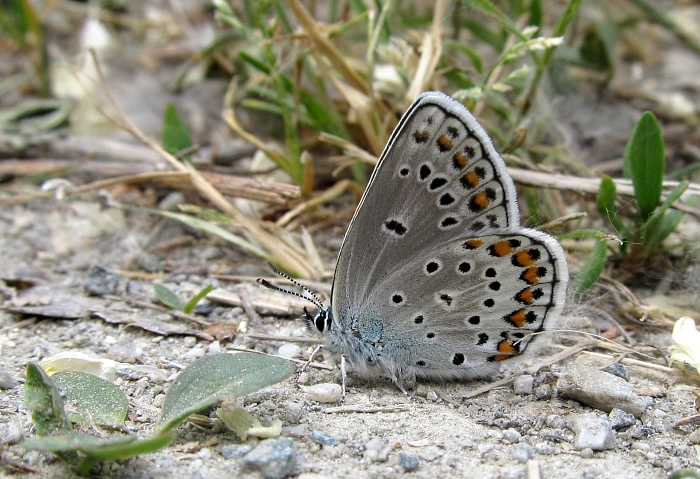The weather changed today!

Up at the crack of dawn so I could take Minnie for a decent walk before the long journey to Geneva - followed for her by an hour in a backpack to the first site!

This was officially a black hairstreak and Reverdin's blue trip but I had some hopes for large copper too. This national rarity has enjoyed something of an explosion recently and I now see it yearly, as opposed to twice lifely, which was my rate before 2011. Clearly the trend is continuing. I saw it at two sites today, including at least four individuals and probably more at the second site.

What an insect!


I initially thought this next one was very worn, indicating they had been on the wing a considerable while, but I now wonder if it had had an encounter with a mower:

If I'd asked you to guess the species from that shadow, you'd have been hard pushed!
Minnie even managed to inveigle her way into a
dispar shot, though sadly it flew before I could get a better picture:

Black hairstreaks were flying, but very frustratingly only one of them came low, and even then it kept disappearing round the wrong side of flowers and leaves. I got only record shots.

Other species I can only really get by heading west are pearly heath and Reverdin's blue:



Those blues were at a site where dogs aren't technically allowed, so I kept Minnie on a short lead and didn't hang around taking photos - being Saturday, there were a few people about.
Probably the most tantalising butterfly of the day was this skipper:

I have a strong feeling it's
Pyrgus cirsii - which is a very rare Swiss butterfly. But I didn't have my net, as I didn't expect to need it, and I couldn't manoeuvre myself into position to see the underside - then I lost it.
There were lots of bee orchids in tiny, scattered groups:

And fragrant orchids are now in flower:

It was a long day for Minnie and actually quite hard work for me - I carried her a total of over 40km in her backpack, and though the Geneva countryside is not quite the Alps it is the foothills of the Jura and definitely 'rolling'. To be fair, the first 10km were downhill from my house to Aigle station.
Here she is, waiting to be popped into the bag for the last 11km, back to Geneva station:

Back home, we had a bite to eat then went to check on the cats. The sudden change in weather has chased Novus up his tree. I was able to find him again (he is unmistakable with his wonky horn), but he is now well above my head. It is still only a sapling, though, so if he pupates on the same tree I should be able to find the pupa. Hostilian has nowhere to go - he is on a tiny, isolated sapling - and had changed leaves by about 20cm. I couldn't find Sextus but it was evening and I don't doubt he is still there.
Guy






























































